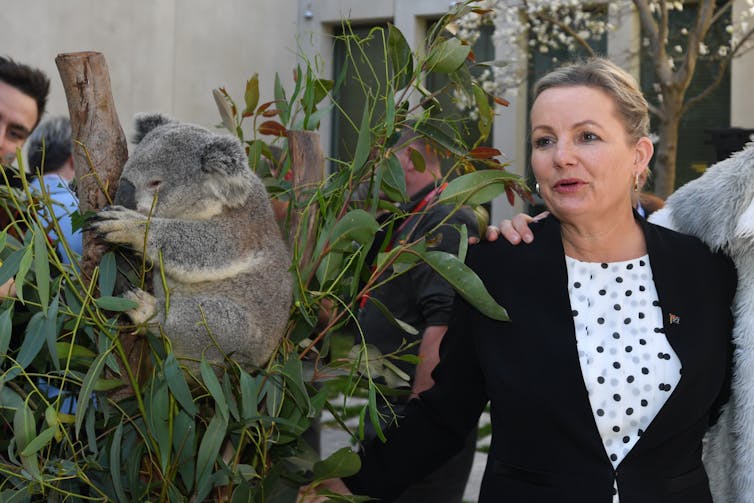The federal government has proposed replacing almost 200 recovery plans to improve the plight of threatened species and habitat with “conservation advice”, which has less legal clout. While critics have lamented the move, in reality it’s no great loss.
Recovery plans are the central tool available to the federal government to prevent extinctions. They outline a species population and distribution, threats such as habitat loss and climate change, and actions needed to recover population numbers.
But many are so vague they do very little to protect threatened species from habitat destruction and other threats. And governments are not obliged to implement or fund the plans, rendering most virtually useless.
Until federal environment law is strengthened and conservation management is properly funded, the prospects of our most vulnerable species will continue to worsen – and some will be lost forever.

What’s being proposed?
All threatened species and ecological communities have a conservation advice, and some also have a recovery plan.
Recovery plans and conservation advices both set out the research and management needed to protect and restore species and ecological communities listed as threatened under federal environment law.
Both instruments are usually developed by state or federal environment departments. Recovery plans can be long, complex documents which take several years to draw up and get approved. Conservation advices are usually shorter and less detailed, and are approved when a species is listed as threatened.
The minister is legally bound to act consistently with a recovery plan – for example when considering a development application which would damage threatened species habitat. Conservation advices are not legally enforceable.
The government has been reviewing past recovery plan decisions, and has identified almost 200 threatened species and ecological communities for which it believes a conservation advice will suffice.
They include the spectacled flying fox, the Tasmanian devil and the ghost spider-orchid, as well as the giant kelp marine forests of southeast Australia and NSW’s Cumberland plain woodland.
The government says a conservation advice is a “more streamlined, nimble and cost-effective document” than a recovery plan for identifying conservation needs and actions.
A broken system
On the surface, it may seem the federal government wants to replace a powerful conservation instrument with a weaker one. But in reality, most recovery plans have done little to protect threatened plants and animals – for several reasons.
First, the wording of recovery plans is often vague and non-prescriptive, which gives the minister flexibility to approve projects that will harm a threatened species.
One analysis in 2015 by environment and legal groups exposed weaknesses in the wording around habitat protection. Of the 120 most endangered animals covered by recovery plans, only 10% had plans where limits to habitat loss was clearly stated.
For example, North Queensland’s proserpine rock wallaby is threatened by land clearing for residential and tourism developments. The analysis found its recovery plan contained “no direct and clear requirement to avoid or halt land clearing or other destructive activities”.
The Carnaby’s black-cockatoo, of Western Australia, has lost much of its foraging and breeding habitat to land clearing. Yet its recovery plan also failed to specify limits to habitat loss, allowing substantial clearing to continue.
Second, many recovery plans never come to fruition. In October last year, plans were reportedly outstanding for 172 species and habitats, and the federal environment department had not finalised one in almost 18 months. The recovery plan for the Leadbeater’s possum, for example, was devised five years ago but has never progressed past draft form.
Third, conservation management in Australia is grossly underfunded. This means recovery plans are often just a piece of paper, without funding or a team to implement them.

So will conservation advices work?
A good recovery plan, such as that of the eastern barred bandicoot, includes all the relevant detail of biology, threats, budgets, timelines and targets to turn a population around.
In the next few years, hundreds of recovery plans will need updating – a huge bureaucratic task. Given so many recovery plans have been ineffective, one has to question whether that’s the best use of government conservation dollars.
So will the move to conservation advices do as good a job? Historically, they have contained such scant detail they were of little use. However, this has been changing. Conservation advice for the northern hopping-mouse, and Mahony’s toadlet, for example, provide precise details of habitat and threats.
The Threatened Species Scientific Committee is reportedly working with the federal environment department to ensure all conservation plans provide an efficient, best-practice method for conveying recovery needs. This work is crucial.
There’s some evidence to suggest conservation advices can have legal sway. Conservation advice on the Leadbeater’s possum last year helped persuade a Victorian court to stop logging in some habitat. (The decision was later overturned, for unrelated reasons).
And federal Environment Minister Sussan Ley last year directed A$18 million to koalas on the basis of a conservation advice. This shows they can successfully inform government investment decisions.
Read more: Australia's threatened species plan sends in the ambulances but ignores glaring dangers

Looking ahead
Recovery plans will remain vital for species with complex planning needs, such as those that face multiple threats. Conservation advices can suffice in some instances, but also have failings.
Far better than both instruments would be to strengthen regulatory tools, such as critical habitat protection. This can happen independently of recovery plans or conservation advices.
Even better would be for the government to adopt the recommendations of Graeme Samuels’ recent review of federal environment law – particularly his recommendation for national, legally-binding environmental standards to guide development decisions.
But most importantly, the federal government must invest far more in threatened species protection. Without money, many threatened species will continue on the path to extinction.


